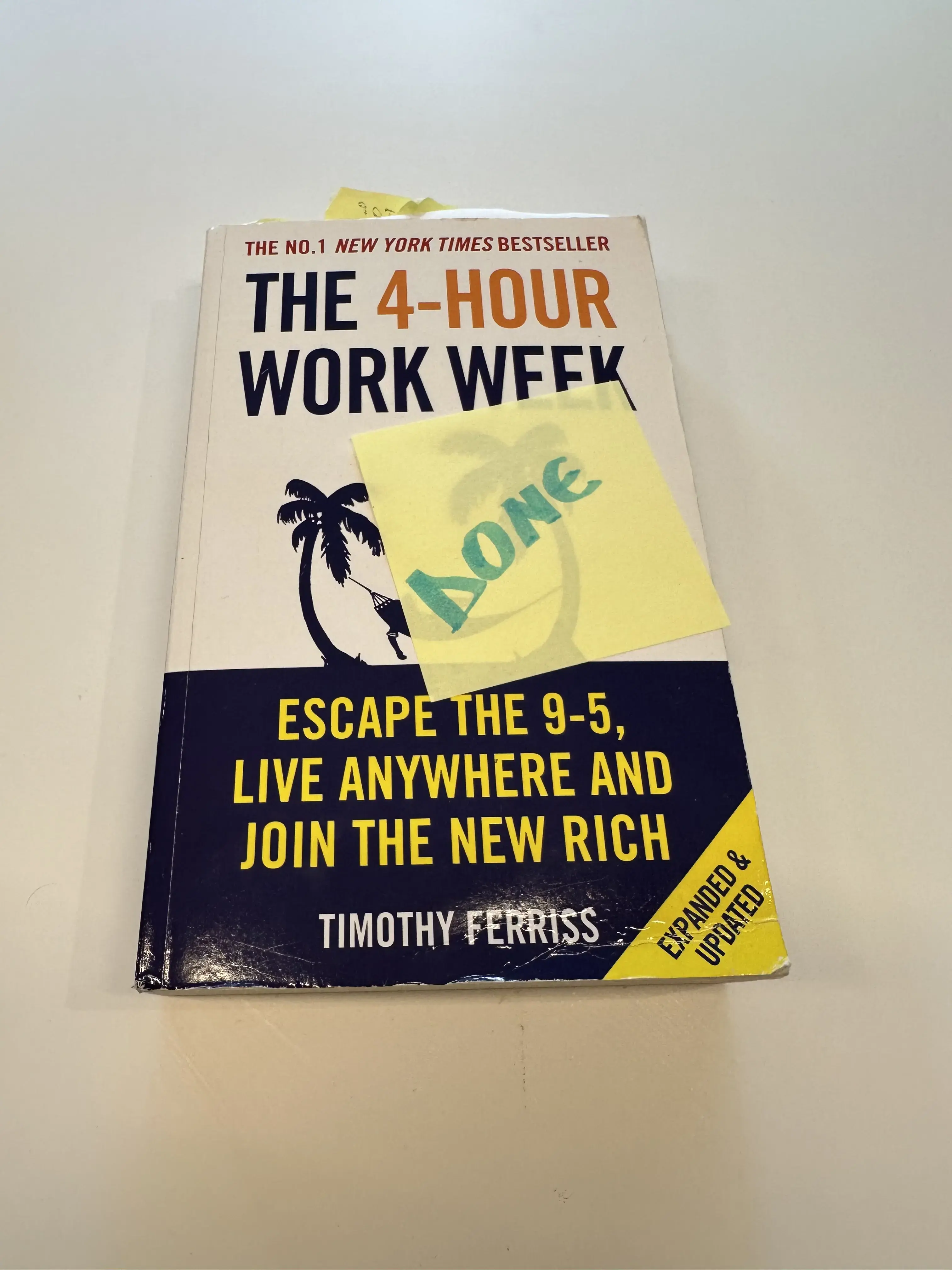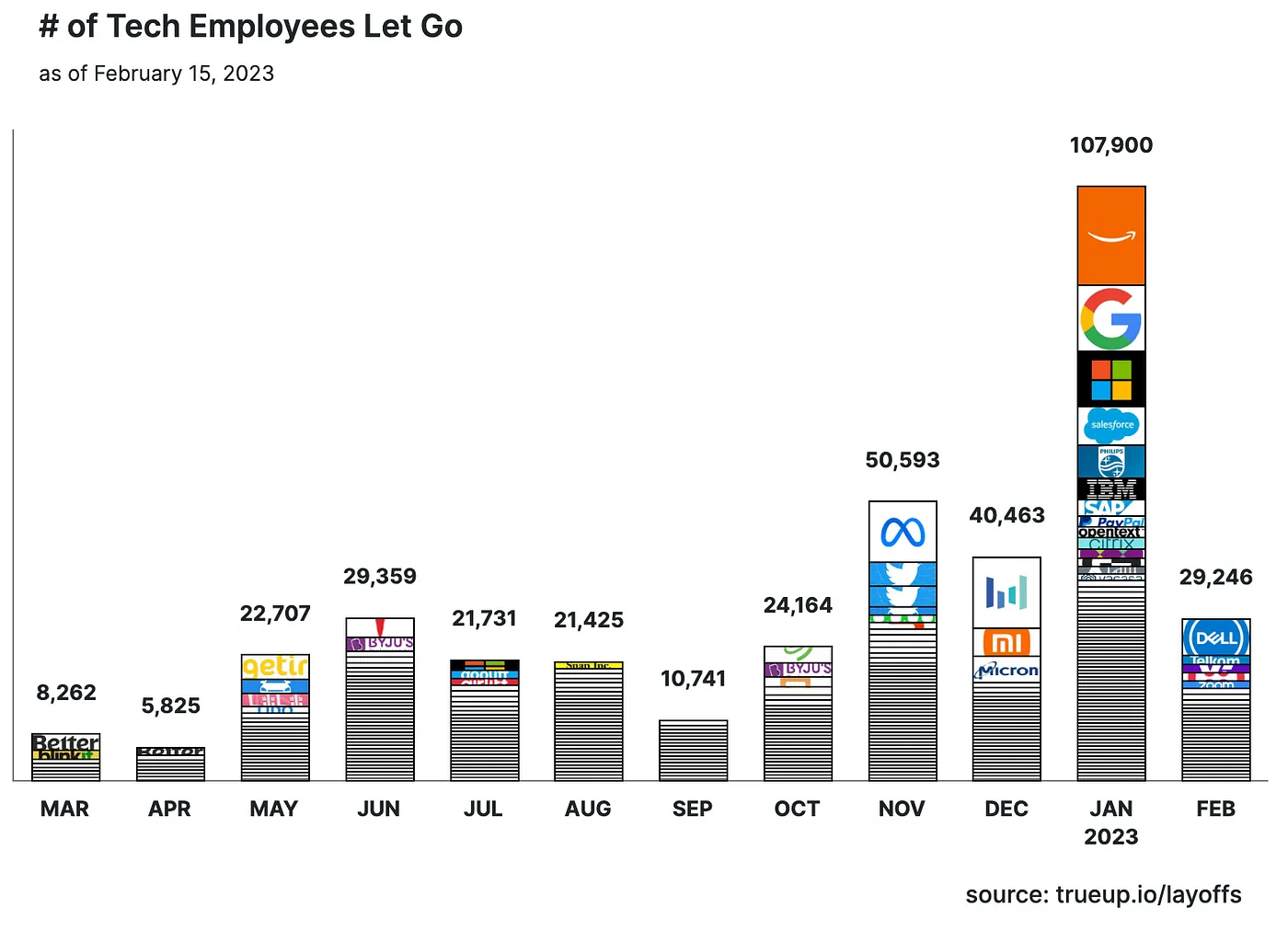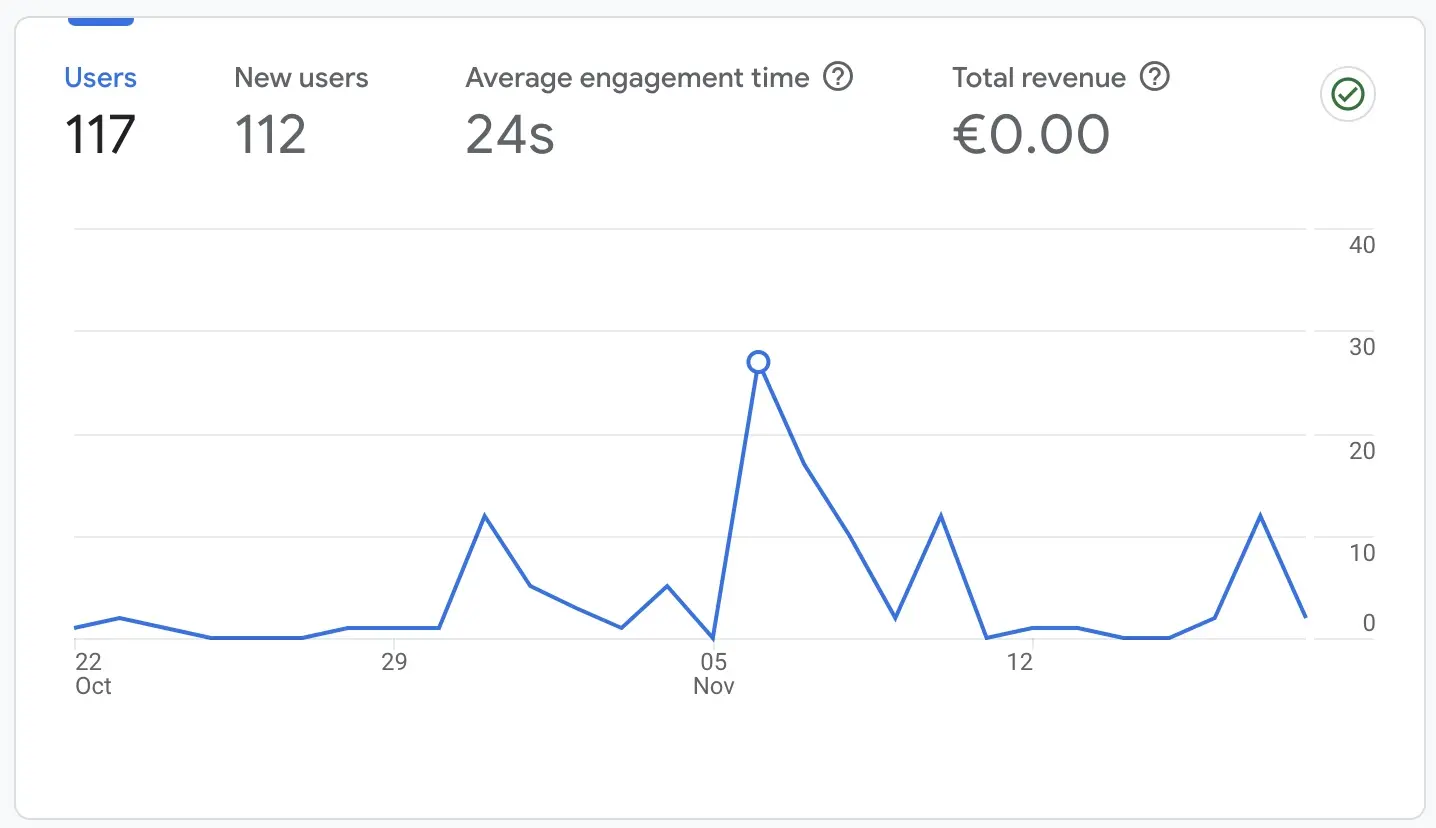This is probably going to be a trial and error experiment from which I'm hoping to land the correct format for my readers. So join me in the endeavor and feel free to share your thoughts in the form below.
The 4-Hour Work Week

The concept of a drastically reduced workweek, once considered far-fetched, is now within reach, thanks to Tim Ferriss's "The 4-Hour Work Week." This book isn't about the more commonly discussed 4-day work week but rather a radical reduction to just four hours.
For me, even from the first couple of pages I could clearly see that Tim is an extremely talented man, with an iron will and well versed, now after finishing it I must add that he is brilliant and even though I will not be able to follow it to the line it’s offering a glimpse into a world of new possibilities, especially in the era of hybrid and remote work.
Before we dive in, a little about Tim is an American entrepreneur, author, and lifestyle guru, best known for his bestselling book "The 4-Hour Workweek." He advocates for maximizing efficiency and productivity, often through unconventional methods, to achieve success in both personal and professional life. In addition to his writing, Ferriss is also known for his podcasts, where he interviews various successful personalities, and for his experiments in self-improvement and learning.
His work focuses on teaching others how to be more effective and how to apply the principles of lifestyle design to their own lives. Ferriss's approach combines personal experience with research and interviews, making him a prominent figure in the fields of productivity and personal development.
And a little about the book, it was initially published in 2007, definitely ahead if it’s time, it popularises the concept of lifestyle design and living more while working less.
The 4HWW is split in 4 major parts, spelling out the word:"DEAL”; D - DEFINITION, E - ELIMINATION, A - AUTOMATION, L - LIBERATION, each with 3-5 chapters.
Part I:
In the first four chapters, Ferriss aims to redefine the concept of work and success. He proposes the idea that it's possible to escape the rat race, create a more flexible work schedule, and live a richer life with time for personal passions and adventures.
- Critique of the traditional work-until-retirement model.
- Emphasis on lifestyle design as opposed to wealth accumulation.
- Introduction of Ferriss's own experiences and transformations in his approach to work and life.
This chapter introduces Ferriss’s concept of challenging the status quo. He discusses the importance of questioning commonly accepted 'truths' about work and life. He introduces the idea of 'lifestyle design' and argues against the deferred-life plan, where one works hard for years to enjoy life later in retirement. Instead, Ferriss advocates for creating a life that intersperses mini-retirements throughout one's working years.
- Challenging Conventional Wisdom: Emphasizes the importance of questioning societal norms and popular beliefs about work and life.
- Introduction to Lifestyle Design: Introduces the concept of designing one's life and career to maximize personal freedom and fulfillment.
- Critique of Deferred Life Plan: Argues against the traditional model of working hard for many years with the hope of enjoying life upon retirement.
Ferriss addresses the fears that often prevent people from breaking away from traditional career paths. He introduces an exercise called 'fear-setting,' similar to goal-setting, but focused on defining and overcoming fears. This chapter is about understanding the worst-case scenarios of making significant life changes and learning how to mitigate these fears. Ferriss emphasizes that inaction can be more costly than action, even if the action leads to failure.
- Addressing Fear: Focuses on understanding and overcoming the fears that prevent people from breaking away from the norm.
- Fear-Setting Exercise: Introduces a practical tool for analyzing fears and planning to mitigate them.
- Action Over Inaction: Highlights the potential costs of inaction and encourages taking calculated risks.
In this 4th chapter, Ferriss talks about the importance of setting clear and unrealistic goals, arguing that reasonable goals can often be uninspiring and limiting. He discusses the importance of being specific about what one wants to achieve, as vagueness can lead to inaction. This chapter lays the groundwork for the rest of the book, which provides specific strategies and tools for automating income, liberating time, and living a more fulfilling life. These chapters lay the foundation for Ferriss's approach, challenging readers to think differently about work, success, and how to live a fulfilling life.
- Setting Ambitious Goals: Encourages setting high, seemingly unreasonable goals to inspire action and achieve extraordinary results.
- Clarity and Specificity: Stresses the importance of being specific about one's goals and desires to avoid ambiguity and indecisiveness.
- Breaking Free from Mediocrity: Advocates for aiming beyond average achievements to attain remarkable success.
Summary: The first chapters focus on redefining work and success, challenging conventional life plans, addressing fears that hinder change, and setting ambitious, clear goals.
Part II:
Part II is my favourite and I believe it to be universally applicable and the methods from it can change anyone's life for the better as well as make them more efficient. We delve into optimising personal productivity by rethinking conventional time management. Ferriss introduces the concept of 'selective ignorance,' advocating for the focused consumption of information and the elimination of unnecessary tasks and distractions. He emphasises the 80/20 principle to concentrate on the most effective tasks and introduces strategies to minimize interruptions. The chapters guide the reader towards managing time and attention more efficiently by being selective about information intake, reducing interruptions, and the strategic use of refusal. This approach is aimed at freeing up time and mental space for more valuable and fulfilling activities.
- Chapter 5: Ferriss discusses the ineffectiveness of traditional time management and introduces the concept of 'selective ignorance'. You shouldn’t be trying to fill every second with work, you’ve got to find a way to create more free time while maintaining or increasing your income.
- 80/20 Principle: Applying the Pareto principle to focus on the 20% of activities that yield 80% of results. Additionally, you can also utilise Parkinson’s Law (This states that the perceived importance of a task will increase in correlation with how much time has been allotted for its completion.)
- Interrupting interruption: Strategies to minimize distractions and interruptions.
- The low-information diet: The idea of deliberately ignoring or not engaging in unproductive information and activities.
- Chapter 6: focuses on cultivating selective ignorance through a conscious information diet.
- Cultivating selective ignorance: Actively choosing what information to consume.
- Time Management: Emphasizes the importance of managing time over managing information.
- Practical Tips: Offers practical strategies for reducing information intake.
- Chapter 7: Tim provides tactics for reducing interruptions and the power of saying no.
- Managing interruptions: Techniques for minimising interruptions in daily life.
- The power of No: The importance of declining requests or opportunities that don't align with personal goals.
- Creating time: How reducing interruptions can lead to significant time savings.
Summary: These chapters delve into more practical aspects of Ferriss's philosophy, focusing on efficiency, selective focus, and the strategic reduction of distractions to create more time for meaningful activities.
Part III:
Part III talks about creating systems that allow income to be generated with minimal ongoing effort. This part of the book introduces concepts and strategies for outsourcing life's tasks and business operations, creating automated income streams, and managing remote teams. It's about leveraging time and resources efficiently to free oneself from the daily grind and focus on more fulfilling activities. The chapters in this section detail how to practically implement these ideas, from hiring virtual assistants to delegating responsibilities effectively.
- Chapter 8: Ferriss discusses the benefits of outsourcing everyday tasks to virtual assistants and other service providers to free up time.
- Leveraging virtual assistants: How to effectively use virtual assistants for personal and professional tasks.
- Eliminating unnecessary tasks: Identifying and removing low-impact activities.
- Cost-benefit analysis: Assessing the financial and time benefits of outsourcing.
- Chapter 9: This chapter focuses on identifying and creating automated income streams, or 'muses'.
- Idea generation for income streams: Techniques for brainstorming business ideas.
- Market testing: Strategies for testing product ideas before a full launch.
- Minimizing risk: Tips for starting small to mitigate financial risk.
- Chapter 10: Tim dives deeper into the process of testing and refining automated income streams.
- Validating business ideas: Practical steps for assessing the viability of a business idea.
- Optimizing product offerings: Fine-tuning products based on customer feedback.
- Scaling up: Strategies for expanding successful income streams.
- Chapter 11: Here he explores methods for managing businesses remotely and automating operations.
- Remote management techniques: Tips for managing a business without being physically present.
- Automating business processes: Utilising technology and systems to automate operations.
- Creating self-sustaining businesses: Strategies for building businesses that run independently.
Summary: These chapters provide a roadmap for creating and managing automated income streams, emphasising the importance of leveraging time, minimising personal involvement in day-to-day operations, and focusing on high-impact activities.
Part IV:
Part IV focuses on the final steps of Ferriss's lifestyle redesign, providing guidance on how to fully embrace and sustain the new lifestyle.
- Chapter 12: Ferriss offers strategies for gradually transitioning from a traditional office environment to a more flexible, remote work arrangement.
- Negotiating remote work: Techniques for convincing your employer to allow remote work.
- Phasing out office presence: Gradual steps to reduce time spent in the office.
- Maximizing productivity: Proving that productivity can increase when working remotely.
- Chapter 13: This chapter is for those who want to leave their traditional jobs entirely, focusing on making the leap into full-time entrepreneurship or lifestyle design.
- Quitting strategically: Planning an exit from a traditional job.
- Transitioning to entrepreneurship: Steps to move from employment to running your own business.
- Risk management: Managing financial and personal risks during the transition.
- Chapter 14: Ferriss discusses the concept of mini-retirements, taking extended time off at regular intervals instead of the traditional single retirement at the end of one's career.
- Planning mini-retirements: How to structure and plan for extended breaks.
- Budgeting for travel: Financial planning for long-term travel.
- Cultural immersion: Tips for immersing in local cultures during mini-retirements.
- Chapter 15: Addresses potential existential challenges one might face after removing work from the center of their life.
- Finding purpose: Discovering new passions and interests to pursue.
- Staying grounded: Maintaining a sense of fulfilment and direction.
- Continual learning and growth: Emphasizing the importance of personal development.
These chapters wrap up the book by providing practical advice for maintaining the lifestyle changes Ferriss advocates, from transitioning out of a traditional work environment to embracing a life filled with meaningful activities and personal growth.
In conclusion, "The 4-Hour Work Week" is more than just a guide to reducing work hours; it's a manifesto for radical life change. Tim Ferriss challenges the deeply ingrained notion that long hours and a traditional career path are the only routes to success. Instead, he presents a compelling alternative: a life where work serves as a means to enjoy life to the fullest, rather than an end in itself.
The book skilfully combines philosophical insights with practical steps, encouraging readers to reassess their priorities, embrace risk, and leverage technology for personal and professional liberation. Ferriss's concepts of lifestyle design, selective ignorance, automation, and mini-retirements are not just theories but actionable strategies that can lead to a more balanced, fulfilling life.
While not every suggestion in the book may be feasible for everyone, the underlying principles of efficiency, intentional living, and challenging the status quo offer valuable lessons. Whether one fully embraces Ferriss's approach or selectively integrates aspects into their life, the 4HWW undeniably opens the door to reimagining what a successful, satisfying life can look like.



